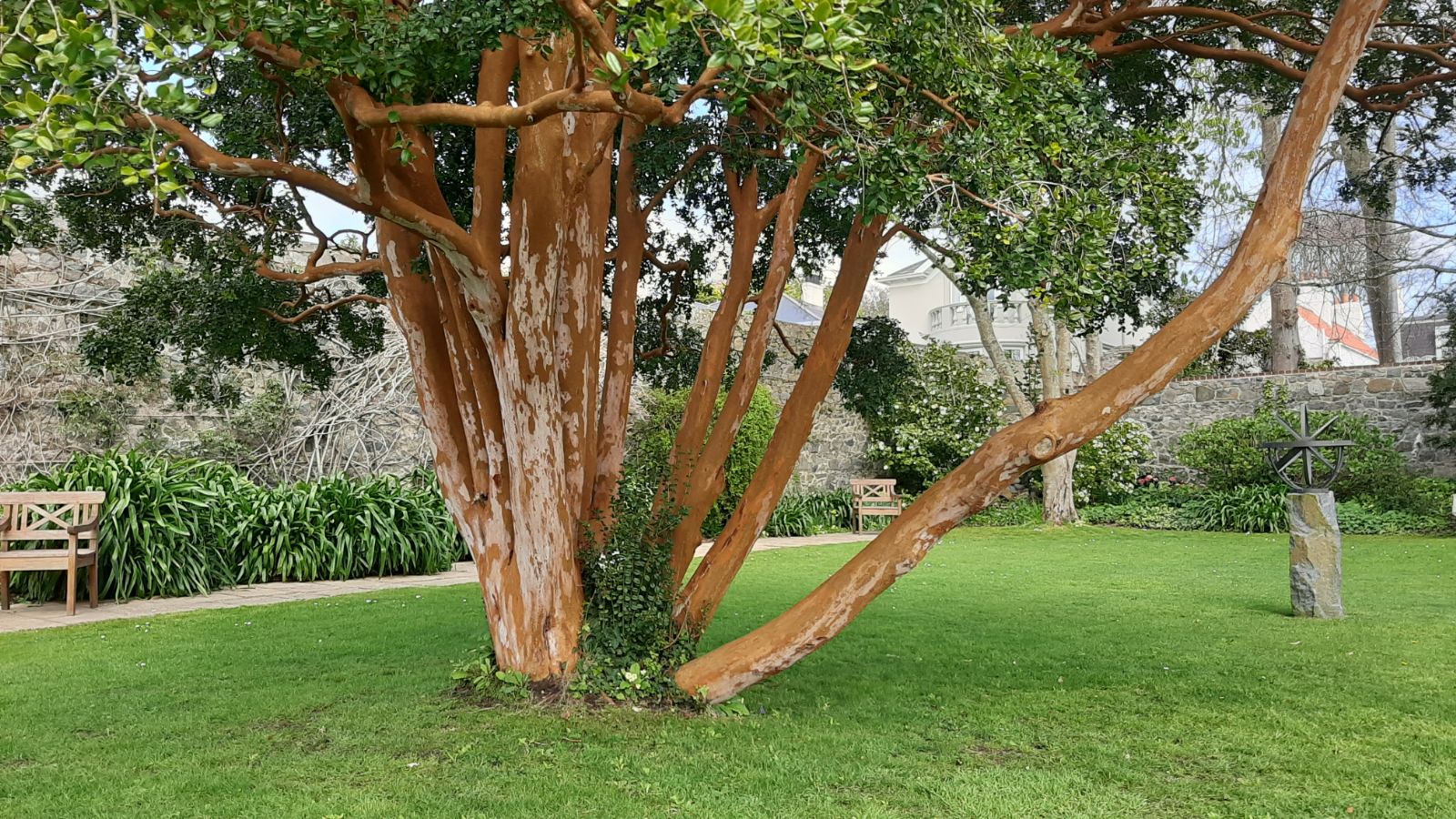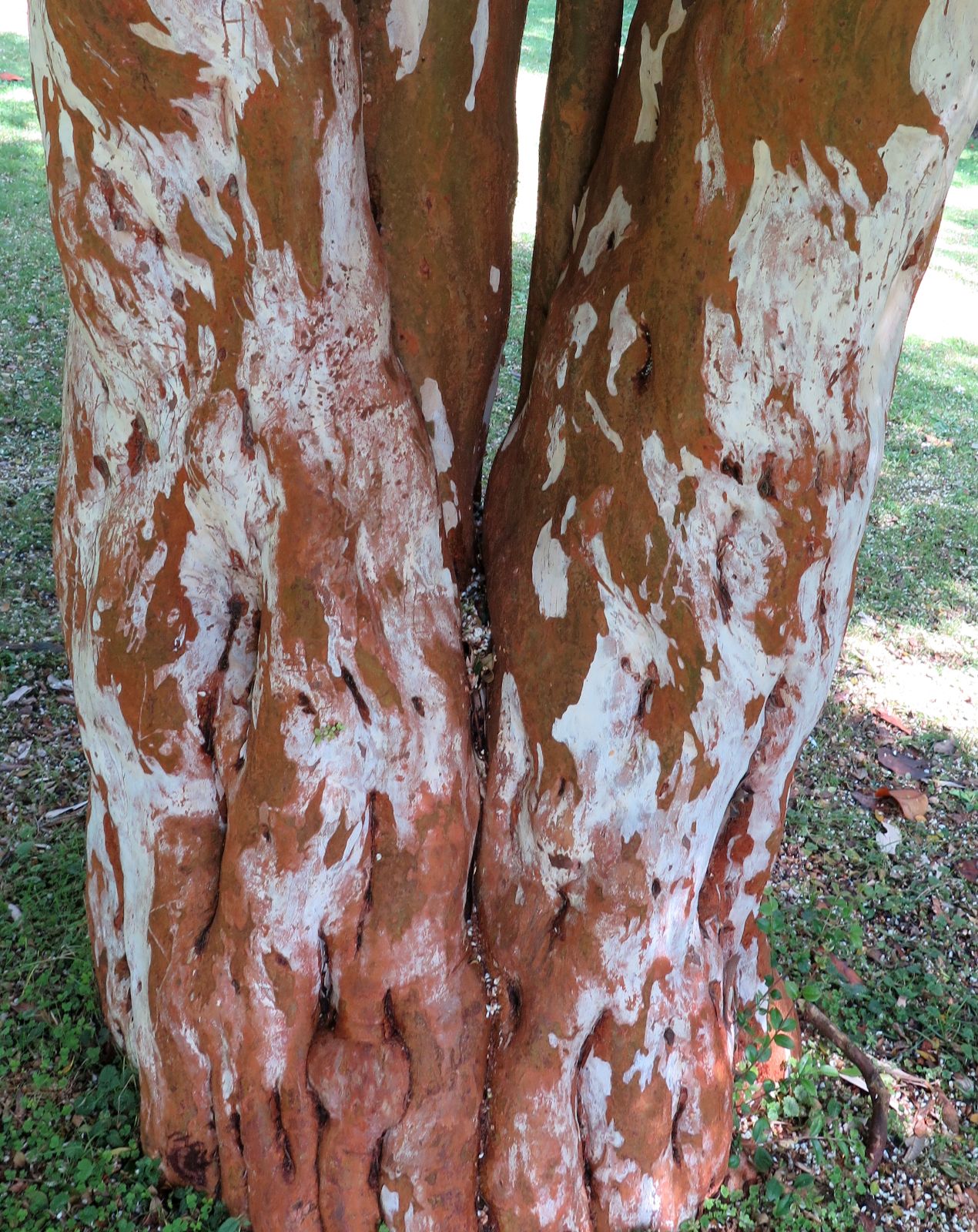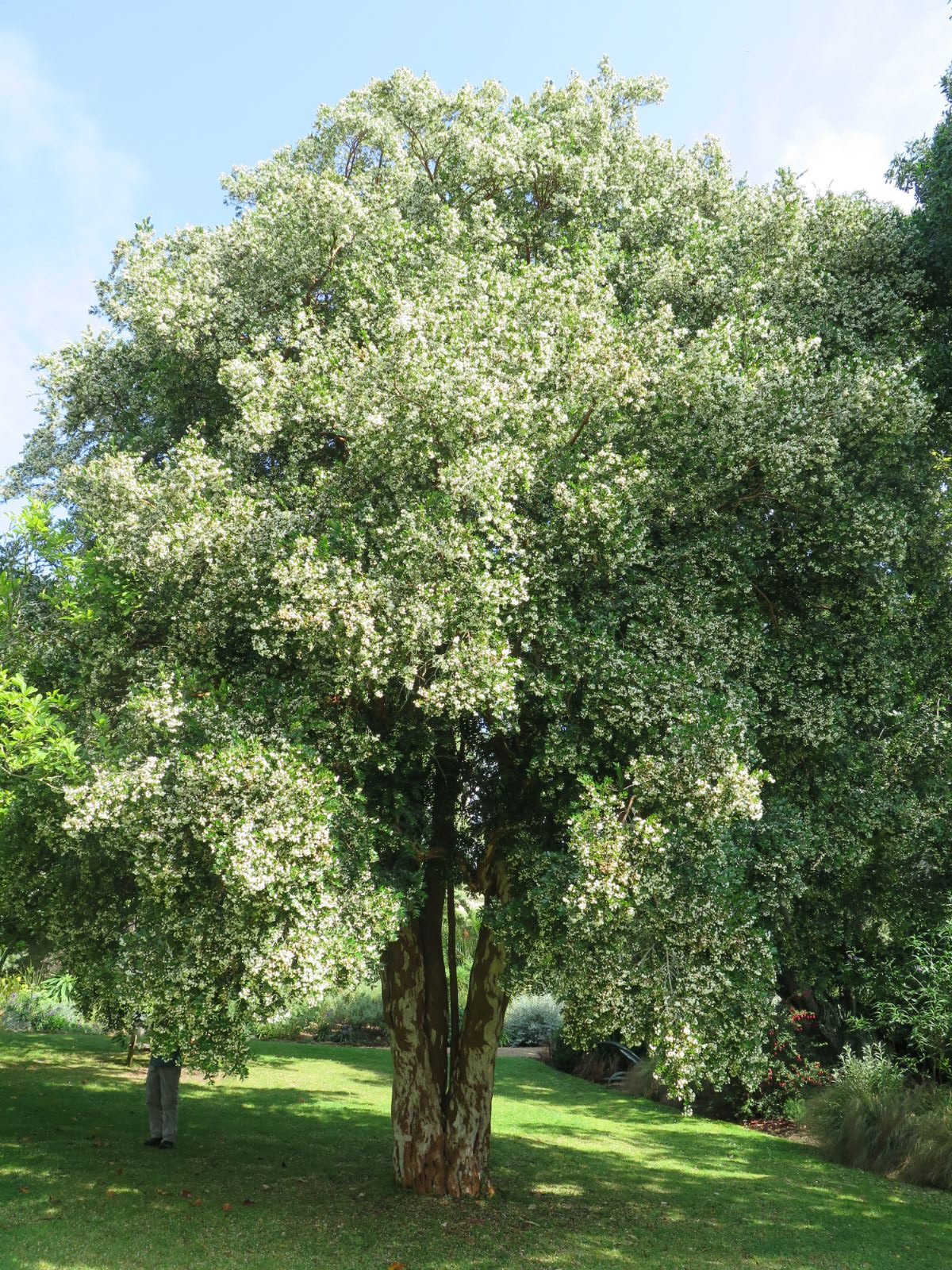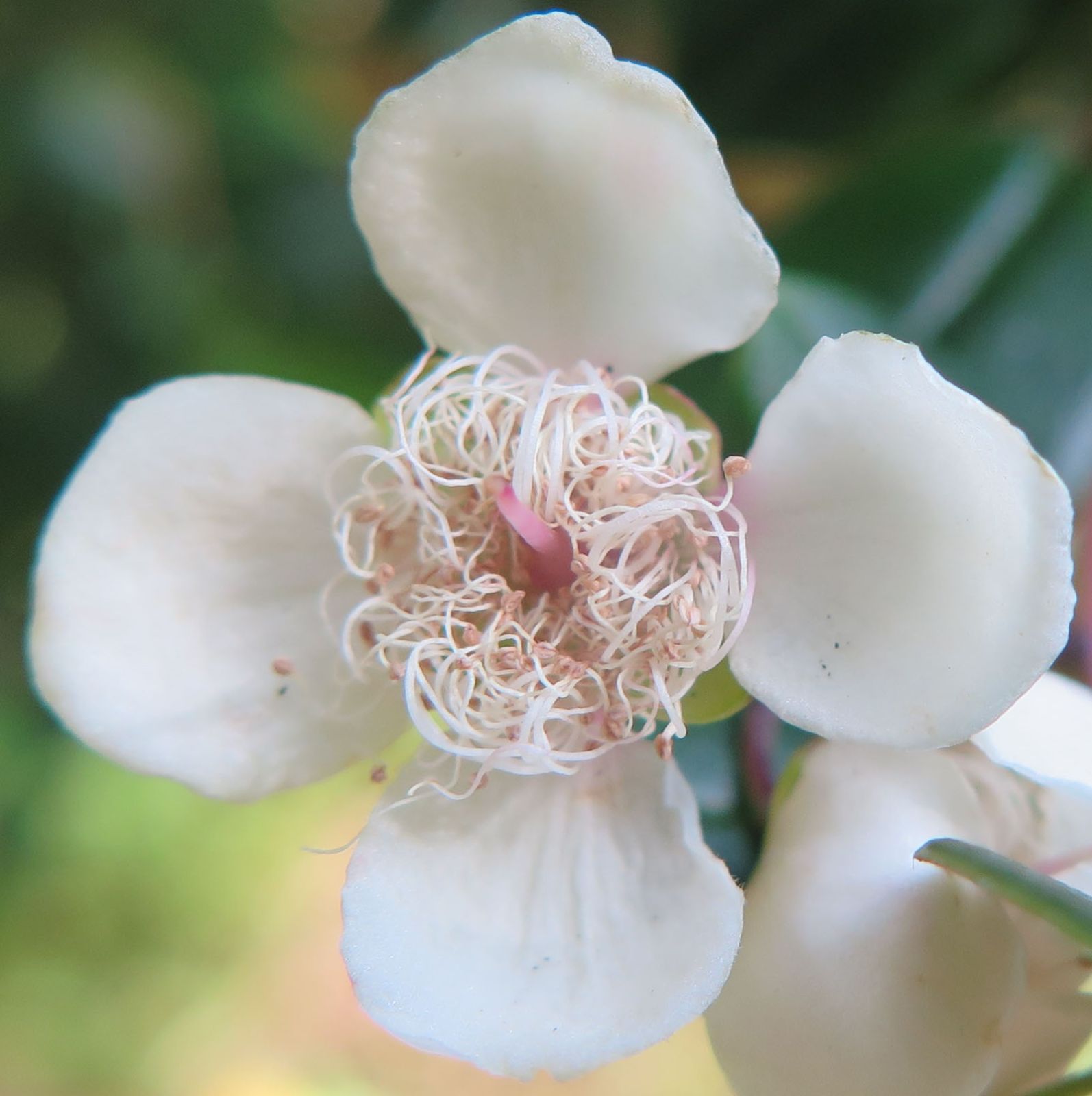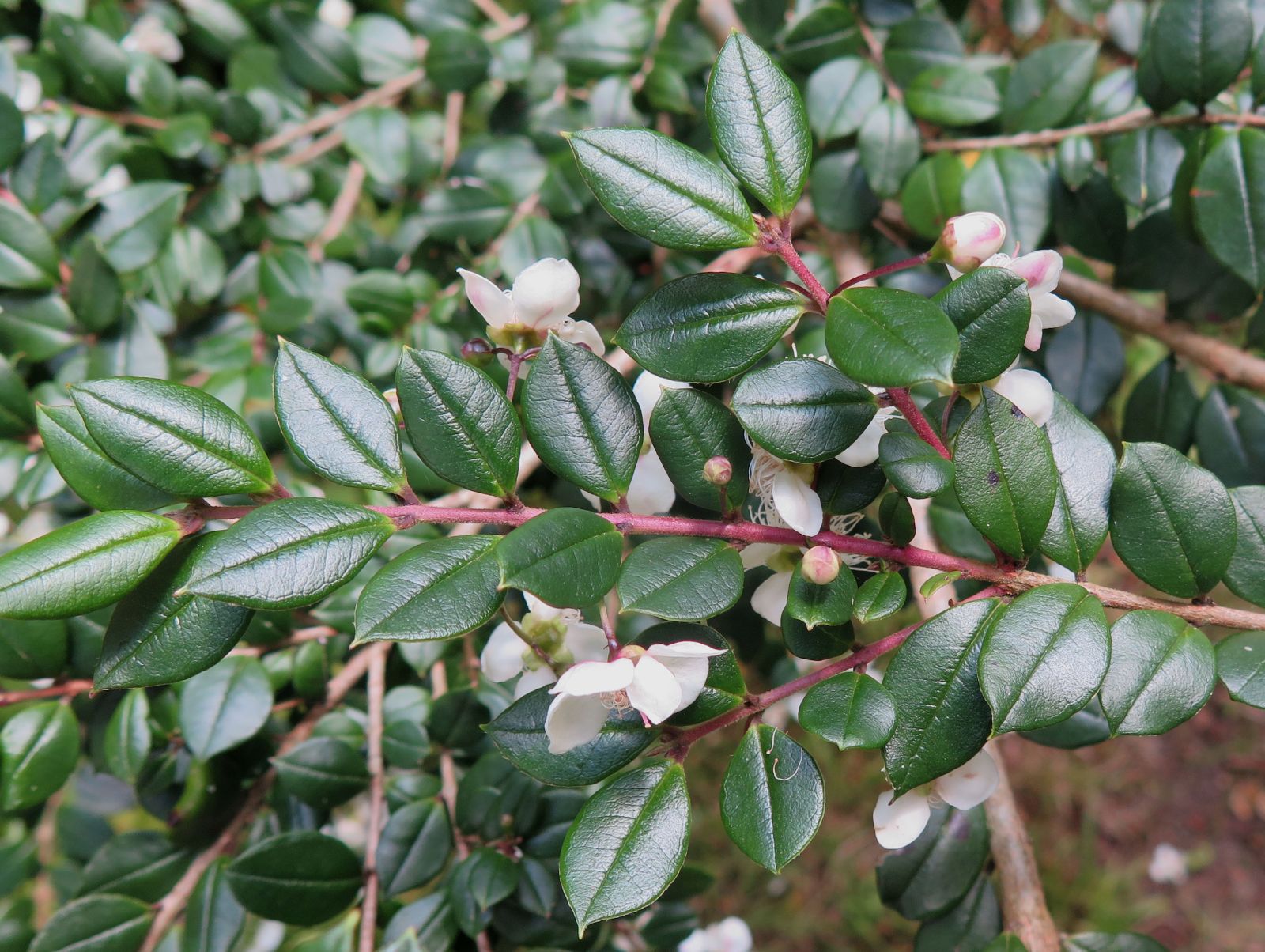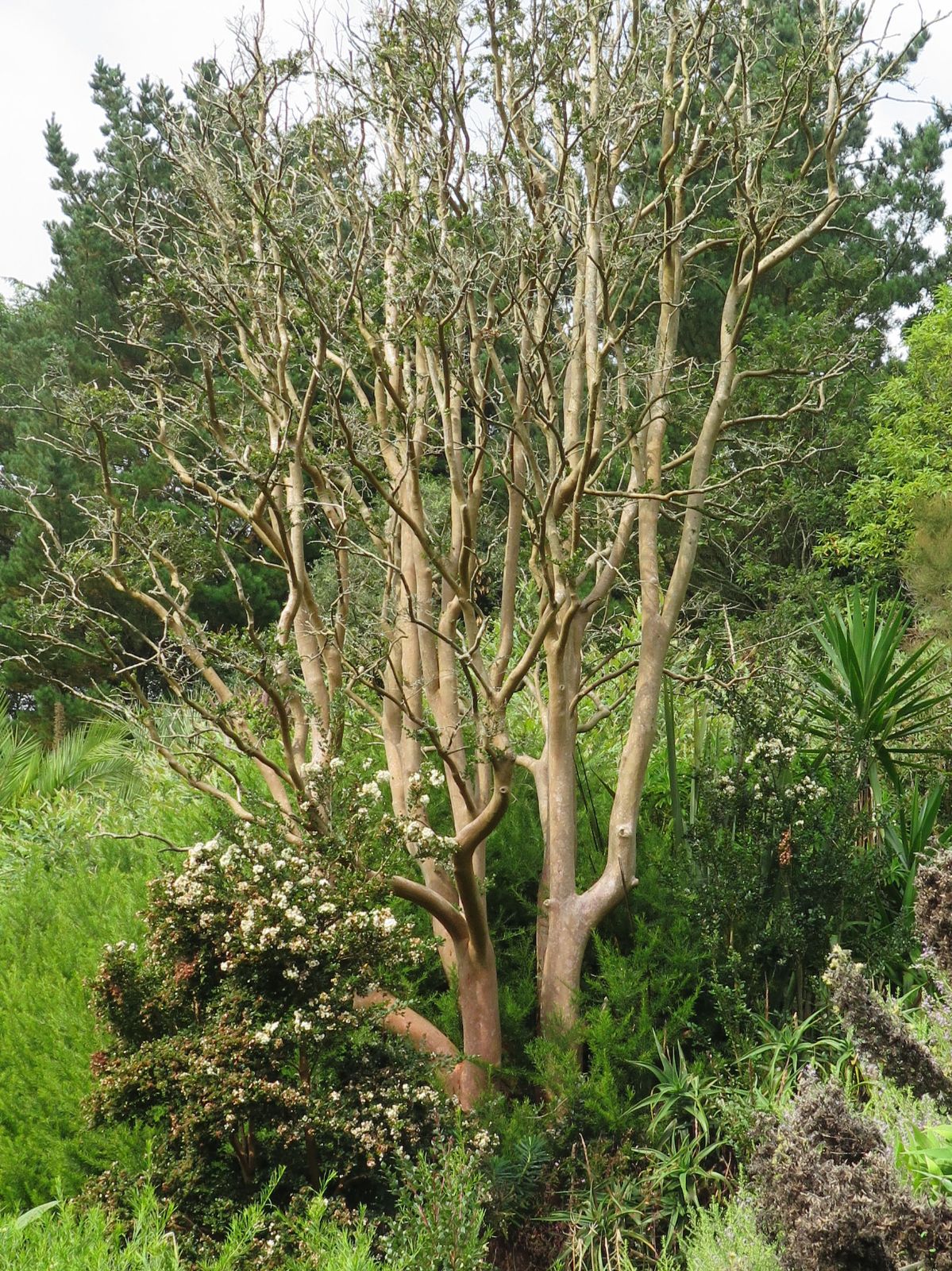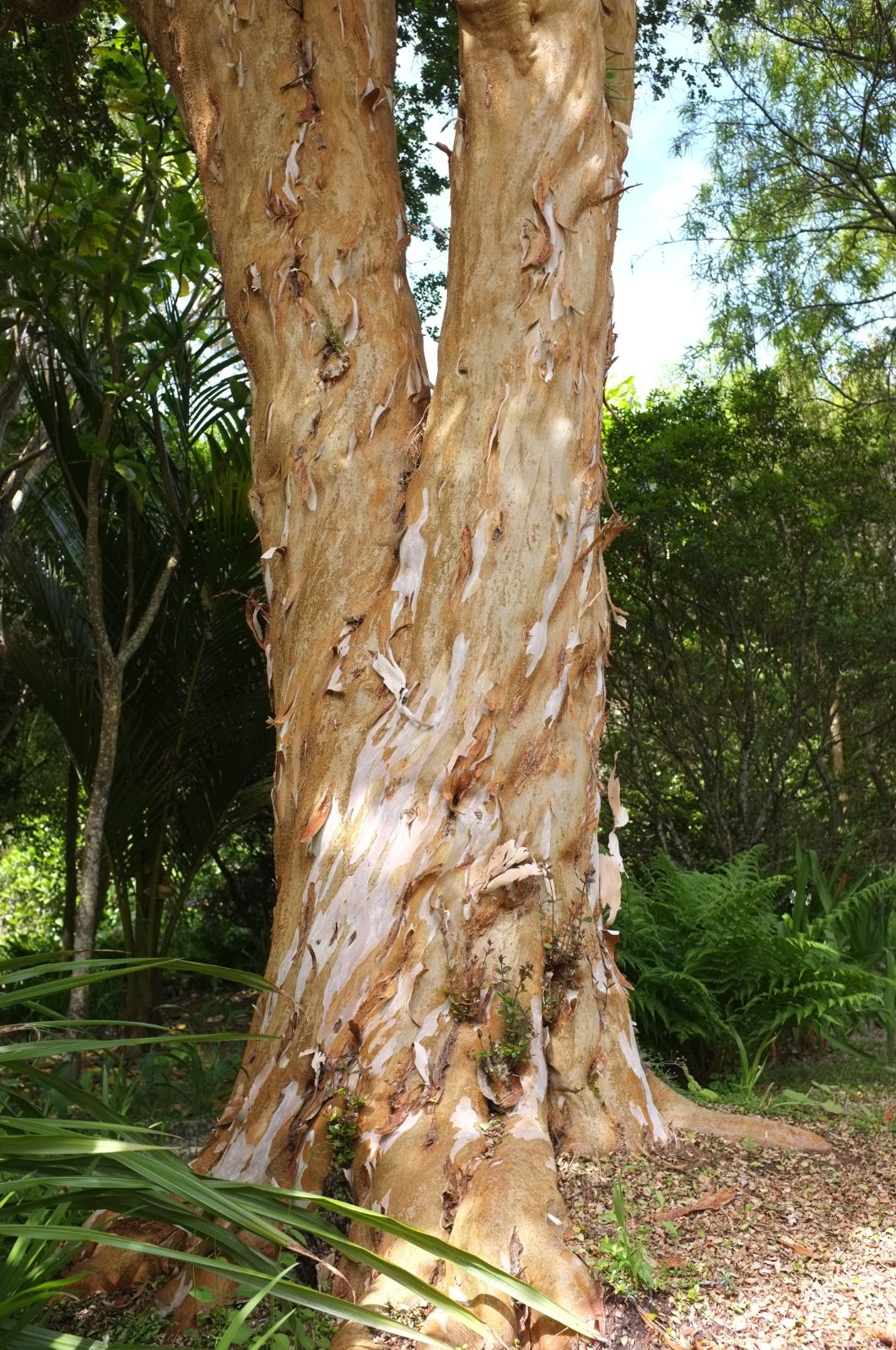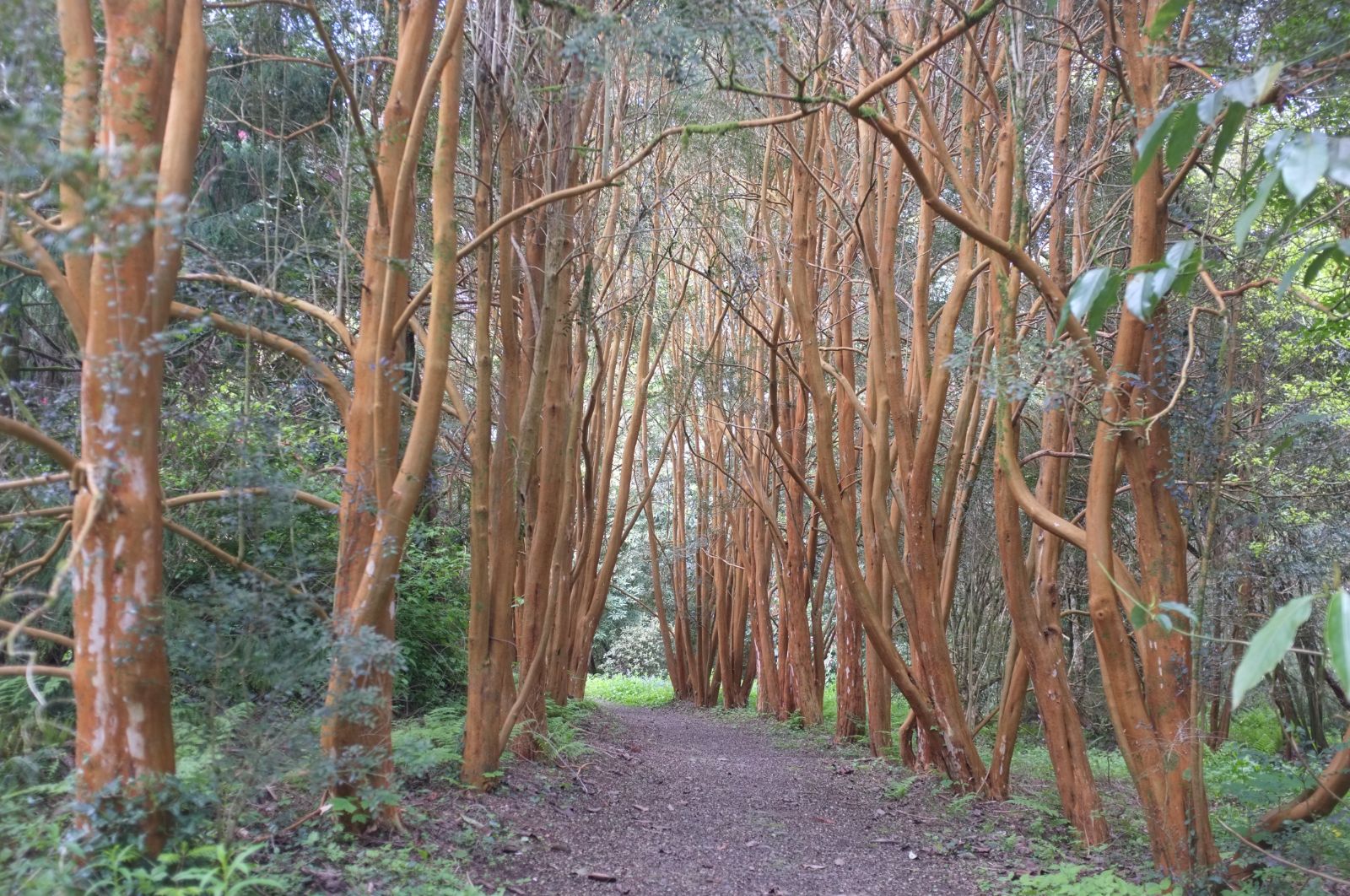Myrtus luma
Credits
Article from Bean's Trees and Shrubs Hardy in the British Isles
Recommended citation
'Myrtus luma' from the website Trees and Shrubs Online (treesandshrubsonline.
Genus
Synonyms
- Myrceugenia apiculata (DC.) Niedenzu
- Eugenia apiculata DC.
- Luma apiculata (DC.) Burret
- Myrceugenella apiculata (DC.) Kausel
A bush 3 to 20 ft high or a tree up to 60 ft high, with a flaking, cinnamon-coloured bark; young branches brown, downy. Leaves opposite, very shortly stalked, broad-elliptic, cuneate at the base, acute and apiculate at the apex, 3⁄4 to 1 in. long, rather more than half as wide, or sometimes slightly longer and more narrowly elliptic, thinly leathery, deep green above, paler below, glabrous except for down on the midrib beneath and on the margins of the basal part of the leaf. Flowers axillary, mostly solitary on pedicels 3⁄8 to 5⁄8 in. long, bearing two small deciduous bracteoles close to the flower, but sometimes in a three-flowered cyme, with each bracteole subtending a shortly stalked flower. Sepals four, broad-oblong, rounded. Petals white, almost orbicular, about 1⁄2 in. long, strongly concave. Stamens very numerous, with yellow anthers, forming a boss in the centre of the flower. Fruits fleshy, globose, 3⁄8 in. or slightly less wide, dark purple, three-celled, with one or two seeds in each cell. Bot. Mag., t. 5040.
Native of the temperate forests of Chile and Argentina; introduced by William Lobb in 1844. In Cornwall and in the milder parts of Ireland this beautiful tree has made itself very much at home, growing as happily as in its native country and producing in many gardens innumerable self-sown seedlings. Specimens 30 to 47 ft high, 2 to 41⁄2 ft in girth have been measured recently in Cornwall at Lanarth, Trengwainton, Trelowarren, and at Tresco Abbey in the Isles of Scilly; in Northern Ireland at Castlewellan. And in Eire at Kilmacurragh, Co. Wicklow; Fota, Ardnagashel, and Garinish Island, Co. Cork; Inishtioge, Co. Kilkenny.
This myrtle is perhaps at its most beautiful when drawn up by neighbouring trees, for the bark is then better displayed than on trees grown in the open, which, as at Trengwainton, usually have shorter stems and bushier crowns. There is a fine group of closely planted trees at Tresco Abbey.
In Argentina there is a picturesque stand of gnarled trees near the holiday resort of Bariloche, much frequented by tourists, and others in the same region which are under state protection. The tree yields a dense timber resembling that of the common box (Tortorelli, Maderas y Basques Argentinos, p. 571).
M. luma was placed by Niedenzu in the genus Myrceugenia, which is distinguished from Myrtus primarily by the seeds having a cartilaginous testa (hard and bony in Myrtus) and an embryo with large, foliaceous cotyledons appressed one to the other and much rumpled and folded (in Myrtus sens. strict. the cotyledons are small). But M. luma does not agree well with the definition of Myrceugenia, and, if separated from Myrtus, should probably be placed in the genus Luma, in which its name would be Luma apiculata (DC.) Burret. The differences between Luma and Myrceugenia are slight, but if the two were to be united it would be under the name Luma, which has priority.
From the Supplement (Vol. V)
The name M. luma Mol. was adopted for this species in the main work since most botanists who have studied the matter conclude that this is the one that Molina had in mind, and not M. lechleriana (M. luma sens. Barneoud).
With regard to its taxonornic position, this species was, until the 1940s, usually placed in the segregate genus Myrceugenia as M. apiculata (DC.) Niedenzu (the name Myrceugenia luma was not available for it, having been used by Berg for a species of the Juan Fernandez Islands known locally as ‘luma’). But as pointed out in the main work its proper position, when removed from Myrtus, would be in the genus Luma A. Gray, in which it would take the name L. apiculata, the combination Luma luma being impermissible.
specimens: Abbotsbury, Dorset, New Garden, 40 × 23⁄4 + 21⁄2 ft and, Round Garden, 44 × 13⁄4 + 13⁄4 ft (1980); Penloe Park, Penzance, 42 × 41⁄2 ft (1979); Castle Kennedy, Wigt., 36 × 3 ft (1979); Stonefield, Argyll, 30 × 2 ft (1981); Mourne Park, Co. Down, two many-stemmed specimens, 48 and 46 ft high (1983).
† cv. ‘Glanleam Gold’. – Margin of leaves creamy yellow, flushed with red when young. This arose as a self-sown seedling in Colonel Uniacke’s garden at Glanleam on Valentia Island, Eire, and was introduced to Britain by Messrs Treseder early in the 1970s (An Irish Flower Garden, p. 115).

